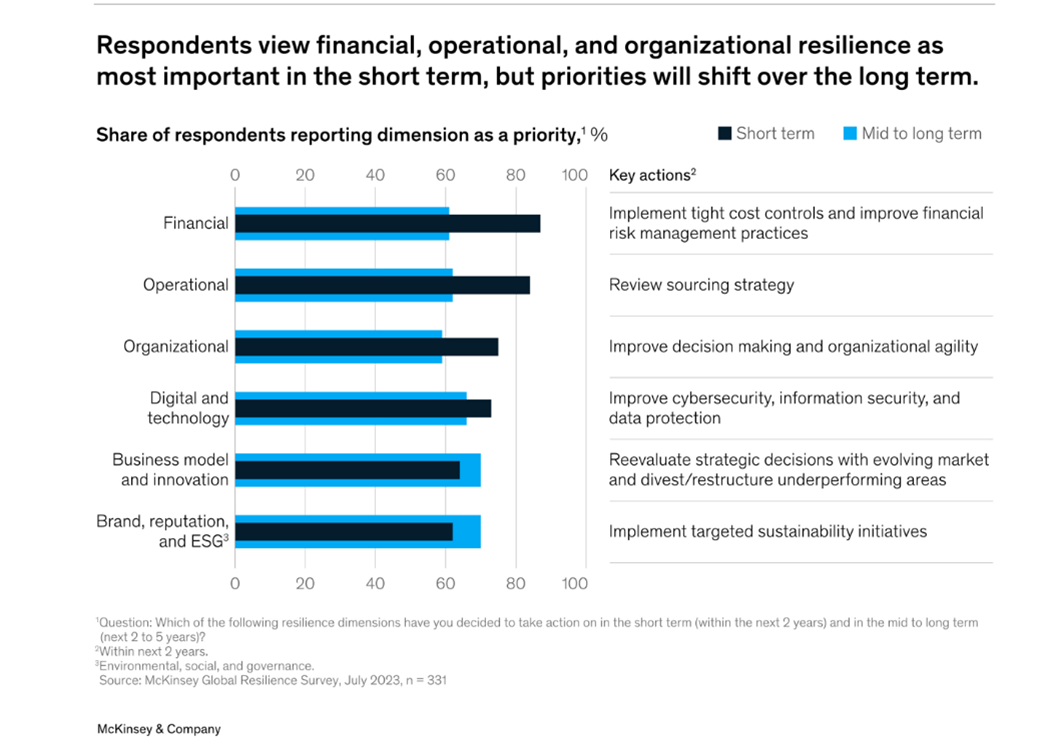Resilience Strategies of Manufacturers and Tech Companies
Randy Wolken, President & CEO
A recent McKinsey Global Resilience Survey of over 300 senior leaders indicates how companies respond to the current economic challenges. These leaders were from various industries, including automotive, assembly, aerospace, electronics, and semiconductors. What was striking was that only 31 percent of leaders felt ready to address the challenges ahead.
McKinsey’s review of resilience leaders indicated the following actions are important:
- Systematically assessing, measuring, and tracking progress. Resilience leaders monitor results closely and discuss resilience metrics during regular reviews instead of only during a crisis.
- Building capabilities in foresight and adaptation. Seeking insights through scenario planning helps in both day-to-day operations and strategic reviews.
- Ensuring clear and transparent communication. The best companies seek to identify strengths and weaknesses while reviewing their resilience programs. They also do so with both internal and external stakeholders.
History shows resilient businesses outperform peers during a crisis and widen the gap in good times. Most companies in advanced industries are constantly navigating through disruption as they become more resilient. Companies that make strategic shifts are more likely to emerge as long-term leaders despite change and ongoing uncertainty. One key finding is that resiliency leaders advocate for becoming faster, bolder, and more balanced in their efforts.
Survey respondents did identify the strategies they primarily focus on in the short-term, and those differ in the amount of focus when they consider their medium to long-term efforts.
